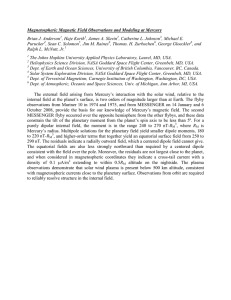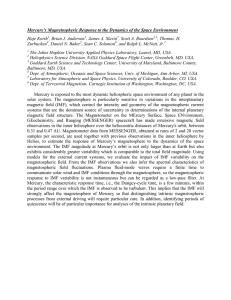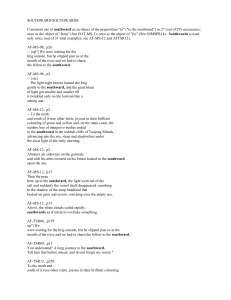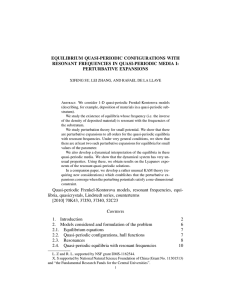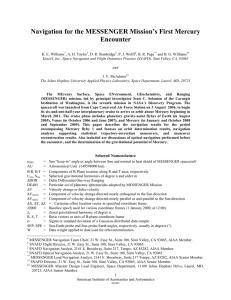Quasi-Periodic ~20–30-s Oscillations in Mercury’s Inner Magnetosphere During Steady Southward IMF
advertisement
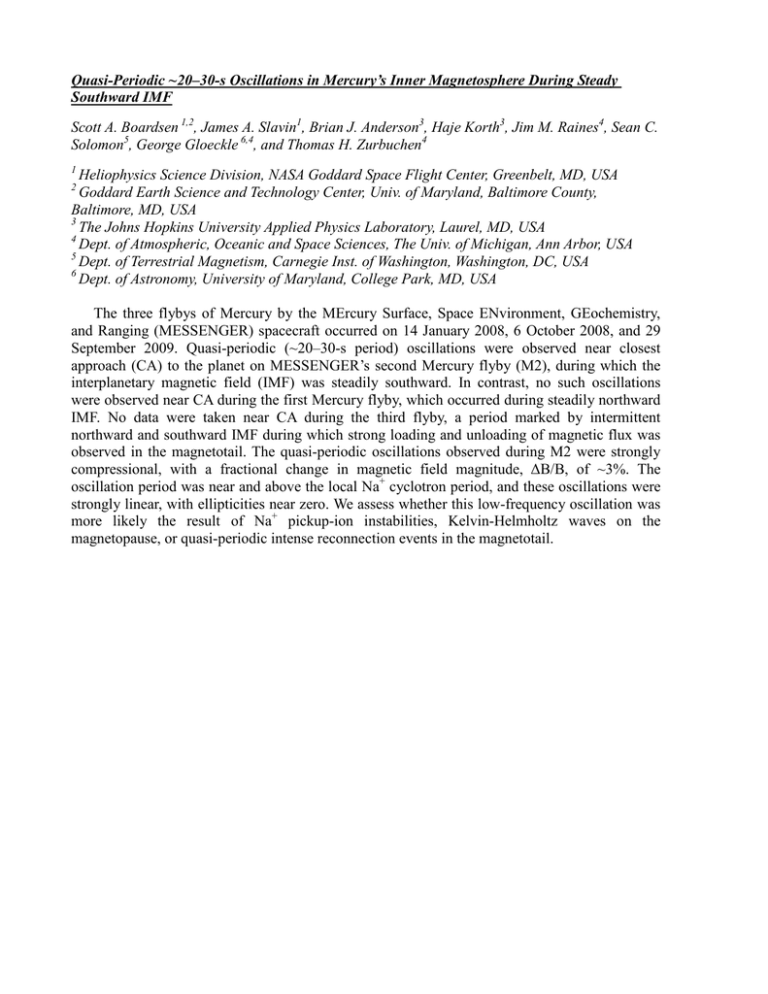
Quasi-Periodic ~20–30-s Oscillations in Mercury’s Inner Magnetosphere During Steady Southward IMF Scott A. Boardsen 1,2, James A. Slavin1, Brian J. Anderson3, Haje Korth3, Jim M. Raines4, Sean C. Solomon5, George Gloeckle 6,4, and Thomas H. Zurbuchen4 1 Heliophysics Science Division, NASA Goddard Space Flight Center, Greenbelt, MD, USA Goddard Earth Science and Technology Center, Univ. of Maryland, Baltimore County, Baltimore, MD, USA 3 The Johns Hopkins University Applied Physics Laboratory, Laurel, MD, USA 4 Dept. of Atmospheric, Oceanic and Space Sciences, The Univ. of Michigan, Ann Arbor, USA 5 Dept. of Terrestrial Magnetism, Carnegie Inst. of Washington, Washington, DC, USA 6 Dept. of Astronomy, University of Maryland, College Park, MD, USA 2 The three flybys of Mercury by the MErcury Surface, Space ENvironment, GEochemistry, and Ranging (MESSENGER) spacecraft occurred on 14 January 2008, 6 October 2008, and 29 September 2009. Quasi-periodic (~20–30-s period) oscillations were observed near closest approach (CA) to the planet on MESSENGER’s second Mercury flyby (M2), during which the interplanetary magnetic field (IMF) was steadily southward. In contrast, no such oscillations were observed near CA during the first Mercury flyby, which occurred during steadily northward IMF. No data were taken near CA during the third flyby, a period marked by intermittent northward and southward IMF during which strong loading and unloading of magnetic flux was observed in the magnetotail. The quasi-periodic oscillations observed during M2 were strongly compressional, with a fractional change in magnetic field magnitude, ΔB/B, of ~3%. The oscillation period was near and above the local Na+ cyclotron period, and these oscillations were strongly linear, with ellipticities near zero. We assess whether this low-frequency oscillation was more likely the result of Na+ pickup-ion instabilities, Kelvin-Helmholtz waves on the magnetopause, or quasi-periodic intense reconnection events in the magnetotail.

